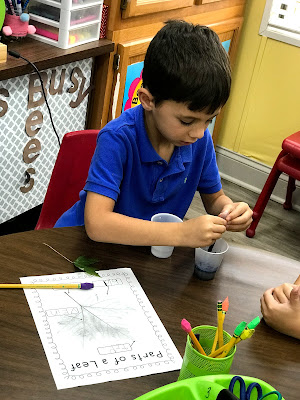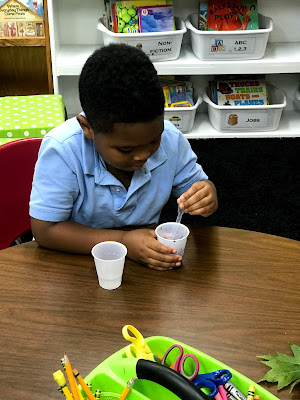First we investigated real leaves under a magnifying glass and labeled a leaf's parts.
One of our experiments was designed to show how leaves use their veins to transport water and food throughout the leaf. Our Teacher's Helper helped mix dark food coloring into water, and then each student used a pipette to fill their own cup with colored water. With the stem of the leaf dipped into the colored water, the leaf would draw the water up into itself.
Can you believe we had NO SPILLS?!?!? 😆
We watched our leaves over the course of several days to see the colors travel up the veins, and each day we drew a picture of what our leaf looked like. Some worked better than others, but it was still a good lesson in tracking results from day to day.
Our next activities centered around chlorophyll. We learned what it is, what it does, and why it goes away. We "removed" chlorophyll from laminated paper leaves that had been colored with green dry erase marker, resulting in colorful fall leaves ... and amazed students!
Then, we removed chlorophyll from real leaves! We headed outside and picked one leaf off a tree on the playground. Once we were back inside, we crumbled our leaves and placed them into a small cup. Using our trusty pipettes, we covered the leaves in rubbing alcohol and gently laid a strip of coffee filter over the edge of the cup, making sure it touched the liquid.
How cool is that?!? Even kindergartners can do something as fancy as extracting chlorophyll from a leaf!























No comments:
Post a Comment